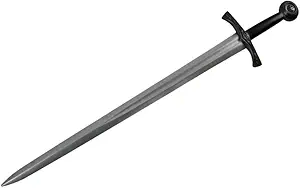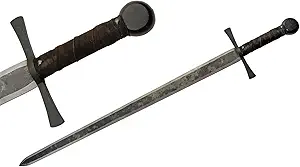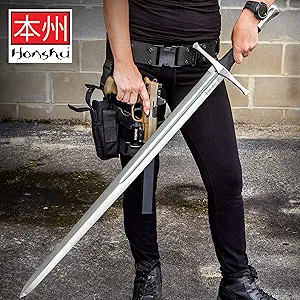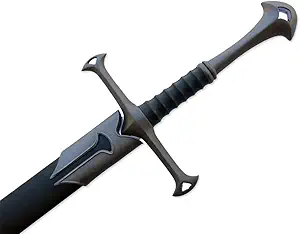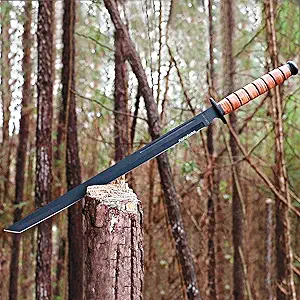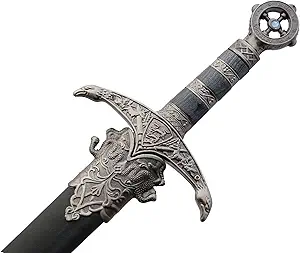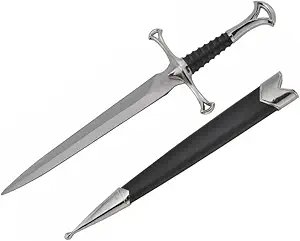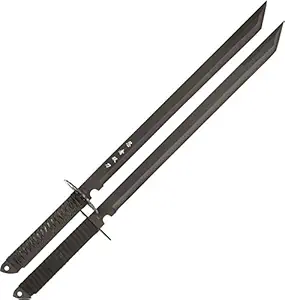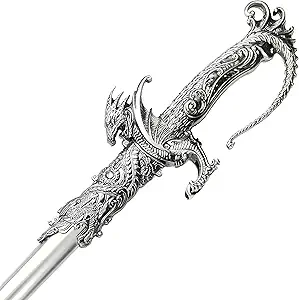The Ultimate Buying Guide for Swords: Types, Key Considerations, Features, Prices, Tips, and FAQs
Overview
Swords have been used as weapons and symbols of power for centuries. Whether you are a collector, a martial artist, or just looking for a unique decoration piece, buying a sword can be a daunting task. With so many types, materials, and features to choose from, it's easy to get overwhelmed. This guide will provide you with all the information you need to make an informed decision when buying a sword.
Types
- Katana: a Japanese sword with a curved, single-edged blade and a long grip to accommodate two hands.
- Wakizashi: a shorter version of the katana, often used as a backup weapon.
- Tanto: a Japanese dagger with a short blade and a long grip.
- Jian: a Chinese sword with a straight, double-edged blade.
- Dao: a Chinese sword with a curved, single-edged blade.
- Sabre: a curved sword with a single-edged blade, often used in cavalry warfare.
- Longsword: a European sword with a straight, double-edged blade and a long grip.
- Rapier: a slender, thrusting sword with a long, pointed blade.
- Cutlass: a short, curved sword often used by pirates.
- Scimitar: a curved sword with a single-edged blade, often used in Middle Eastern warfare.
Key Considerations
- Intended use: Are you buying a sword for decoration, martial arts, or actual combat?
- Material: Swords can be made of various materials, including carbon steel, stainless steel, and Damascus steel. Each material has its own advantages and disadvantages.
- Blade length and shape: The length and shape of the blade can affect the sword's balance and handling.
- Handle: The handle should be comfortable and provide a secure grip.
- Weight: The weight of the sword should be appropriate for the intended use.
Features
- Blade material: The type of steel used for the blade can affect its durability, sharpness, and appearance.
- Blade shape: Different blade shapes are suited for different purposes, such as thrusting or cutting.
- Handle material: The handle can be made of various materials, such as wood, leather, or metal.
- Guard: The guard protects the hand from sliding onto the blade during combat.
- Scabbard: The scabbard is the sheath that holds the sword when not in use.
Prices
Swords can range in price from less than $50 to thousands of dollars. The price depends on factors such as the quality of materials, craftsmanship, and rarity.
Tips
- Research the seller: Make sure you buy from a reputable seller with good reviews.
- Handle the sword: If possible, handle the sword before buying it to ensure it feels comfortable and balanced.
- Consider maintenance: Swords require regular maintenance to keep them sharp and rust-free.
- Check local laws: Some areas have restrictions on owning or carrying swords.
FAQs
Q: Can I use a sword for self-defense?
A: While swords can be used for self-defense, they are not a practical or legal option in most situations.
Q: Can I sharpen my own sword?
A: Sharpening a sword requires skill and specialized equipment. It's best to have it done by a professional.
Q: How do I care for my sword?
A: Swords should be kept clean and dry, and regularly oiled to prevent rust. They should also be stored in a dry, cool place.
Q: Can I travel with my sword?
A: Traveling with a sword can be difficult, as many airlines and transportation companies have restrictions. Check with the specific company before traveling.


